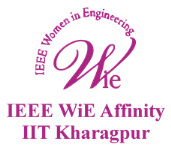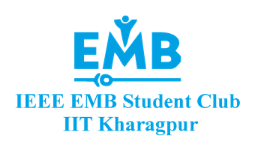Authors' Instructions
Manuscript Preparation Guidelines
Manuscripts are to be prepared according to IEEE two-column conference format in letter-paper. Use the following templates for preparing your blind-submission manuscripts. Read about the Editorial Policies on blind submission before preparing the manuscript.
![]() Download Latex2e template
Download Latex2e template
![]() Download MSWord template
Download MSWord template
IEEE Manuscript Preparation Guidelines Read more
Manuscript limits
All Final Manuscript should have a page length up to 6 pages (letter size, single space, Times Roman of font size 10, two columns format), including figures, tables and references using the template for IEEE TechSym 2014. The title of the submission should be limited to 256 characters and abstract should be within 2,000 characters. No keywords or index terms are to be specified at any level.
Additional mandatory page charge of INR 1,800.00 / USD 30 per page are to be paid by the authors for each additional page exceeding this limit of 6 pages and allowed for up to 2 more pages during registration.
Figures and Illustrations
Since reviews and final publication are based on electronic media, full color graphics are supported for figures and illustrations at no extra cost.
Generation of IEEEXplore compliant Camera-Ready PDF
You can refer to the PDF Specification for IEEE Xplore for guidance on how to make your PDF file IEEE Xplore compatible. Read more
Camera Ready Manuscript submission throught CMT
Manuscript submission and review process management is handled online through Microsoft CMT.
The upload limit for submissions on CMT has been fixed to 3MB. Allowed file types for submission are PDF/DOC. Authors' are strongly suggested to prefer uploading PDF files to reduce upload material size, and preserve structural integrity of their manuscript. Authors are allowed to make changes to their submission any number of times before the deadline. If your submission is selected for presentation at the symposium, you will have to submit a separate camera ready copy with complete author list. Title of the submission, abstract, author name(s) and their ordering entered into the system during initial submission (before submission deadline) will be retained throughout the symposium, with no scope of reflecting changes made even during camera ready submission.
Conflict of interest domain
When you log in for the first time, you will be asked to enter your conflict domain information. You will not be able to submit any paper without entering this information. This is necessary to ensure conflict free reviewing of all papers. Typically if your affiliate institution/organization provides official e-mail id as xyz@abc.com, your conflict domain is abc.com. Additionally if your institution uses multiple domain names (xyz@abc.com and xyz@abc.pqr.com) or you are associated with multiple institutions/organizations, please enter all such information. Please avoid entering commercial domain names (e.g., gmail.com, yahoo.com, live.com, ieee.org etc.) as your conflict domain since it would add to unnecessary complications during reviewer assignment.
Primary area of interest selection
When you submit a paper, you will be asked to specify its associated subject areas. Please note that you indicate only one "primary" subject area. Please pay extra attention in selecting your subject areas, as this information is critical in allowing us to properly assign papers to reviewers.
Advancing Technology for Humanity - Awards nomination
Authors are also encouraged to nominate their submission for maximum of 2 award categories at the time of initial submission, unchangeable after submission deadlines expire. Alternatively, they may also choose to abstain from any nomination.
Agreement on Non-Duplicacy of Submission
Authors are also required to certify their adherance to non-duplicacy term of the Editorial Policies.
Supplementary material submission
Supplementary file submission is allowed over CMT. Authors are encouraged to upload their findings and graphs to substantiate their findings. Allowed file types are PDF/DOC upto a limit of 3MB.
Important Dates
Late Breaking Research Submission: |
|
Regular Paper Submission: |
|
Acceptance Notification: |
|
Late Registration: |
|
Late Breaking Research Registration:  |
|
Camera Ready Submission: |
|
Symposium: |





